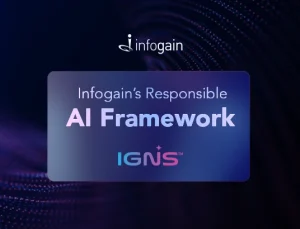- Posted on : December 7, 2023
-
- Industry : Corporate
- Type: Blog

In the evolving landscape of the IT industry, adaptability and responsiveness are key to staying ahead of the curve. This is where Agile methodologies in project management come to play. Agile is a mindset and a set of practices that have transformed the way IT companies approach project management. Agile can revolutionize IT projects.
What is Agile Methodology?
Agile is a flexible and iterative approach to project management that prioritizes collaboration, customer feedback, and incremental development on changing requirements in fast paced IT projects. It emerged in the early 2000s as a response to the shortcomings of traditional project management methodologies that often led to rigid plans, lengthy development cycles, and unsatisfactory end products. A great example of why Agile was introduced can be found here.
The Agile Manifesto, a foundational document for Agile practitioners, outlines the core principles of Agile development:
- Individuals and interactions over processes and tools.
- Working software over comprehensive documentation.
- Customer collaboration over contract negotiation.
- Responding to change over following a plan.
Agile methodologies are not a one-size-fits-all solution; instead, they encompass various frameworks and practices, including Scrum, Kanban, Lean, and Extreme Programming (XP). These methodologies share the common goal of promoting flexibility, adaptability, and customer-centricity. There are 12 principles of an agile methodology:
- Our highest priority is to satisfy the customer through early and continuous delivery of valuable software.
- Welcome changing requirements, even late in development. Agile processes harness change for the customer’s competitive advantage.
- Deliver working software frequently, from a couple of weeks to a couple of months, with a preference to the shorter timescale.
- Businesspeople and developers must work together daily throughout the project.
- Build projects around motivated individuals. Give them the environment and support they need and trust them to get the job done.
- The most efficient and effective method of conveying information to, and within a development team is face-to-face conversation.
- Working software is the primary measure of progress.
- Agile processes promote sustainable development. The sponsors, developers, and users should be able to maintain a constant pace indefinitely.
- Continuous attention to technical excellence and good design enhances agility.
- Simplicity, which is the art of maximizing the amount of work not done is essential.
- The best architectures, requirements, and designs emerge from self-organizing teams.
- The team reflects on how to become more effective at regular intervals, then tunes and adjusts its behavior accordingly.
Advantages of Agile Methodologies in IT
- Enhanced flexibility: IT companies can quickly adapt to changing project requirements, market conditions, and customer needs. This flexibility is essential in the rapidly evolving IT landscape, where new technologies and trends emerge regularly.
- Customer-centric approach: Customers are at the center of the development process. Regular feedback loops and collaboration with stakeholders ensure that the final product meets or exceeds customer expectations.
- Faster time to market: Agile's incremental development approach means that small, functional pieces of software are delivered faster. This enables IT companies to release minimum viable products (MVPs) sooner, gaining a competitive edge and generating early revenue.
- Improved quality: Continuous testing and integration in agile methodologies result in better-quality software. Bugs are detected and fixed early in the development process, reducing the likelihood of costly issues.
- Enhanced team collaboration: Agile methodologies foster teamwork and communication among cross-functional teams. Daily stand-up meetings, sprint planning sessions, and retrospectives encourage collaboration and transparency.
Popular Agile Methodologies
Scrum
Scrum is one of the most widely adopted Agile methodologies. It emphasizes short, time-boxed development cycles called sprints, typically lasting two to four weeks. Scrum teams have specific roles, including a Scrum Master and a Product Owner to ensure efficient project management.
Kanban
Kanban visualizes the workflow on a board with columns representing different stages of the development process. Work items move from one column to the next as they progress. Kanban promotes a smooth and continuous flow of work.
Lean
Lean principles focus on eliminating waste and delivering value to the customer. It emphasizes optimizing processes, reducing unnecessary work, and increasing efficiency.
Extreme Programming (XP)
XP emphasizes engineering best practices, such as test-driven development (TDD), continuous integration, and pair programming. It aims to produce high-quality software through disciplined development practices.
In conclusion
Agile methodologies have emerged as the backbone of successful IT project management. They offer the flexibility, customer-centricity, and speed needed to succeed in today's competitive landscape. By embracing agile principles and practices, your company can navigate the complexities of the industry and deliver exceptional results to your customers.
Contact us and start your agile journey today, then watch your projects soar to new heights.







